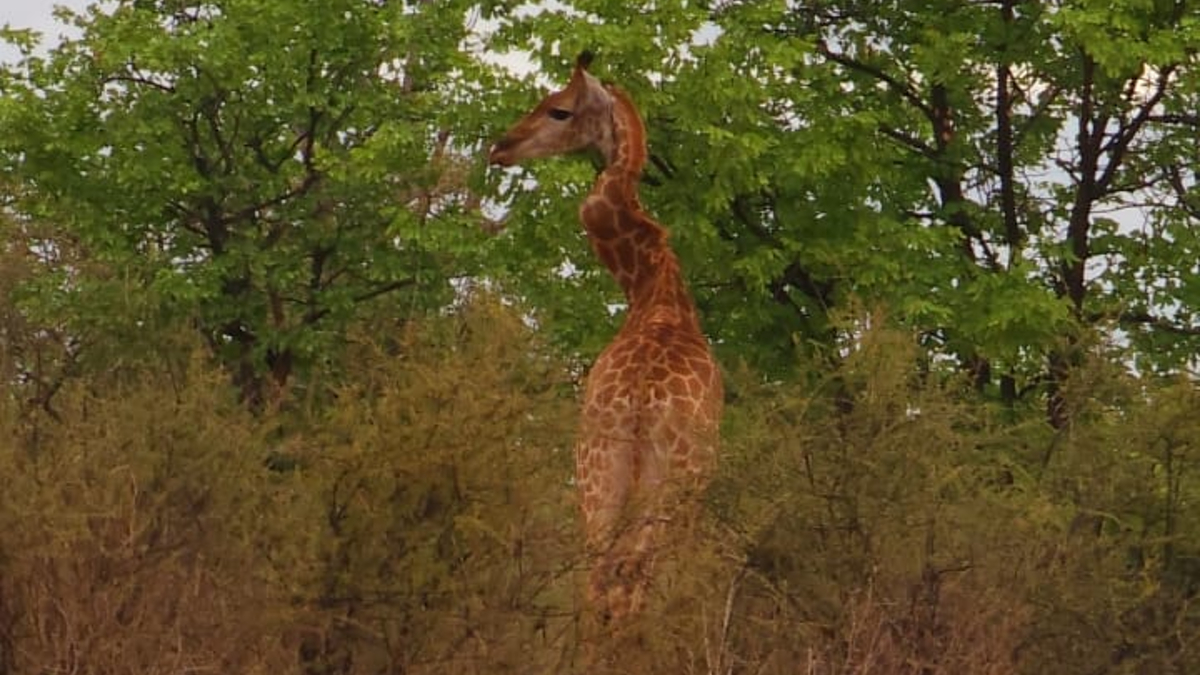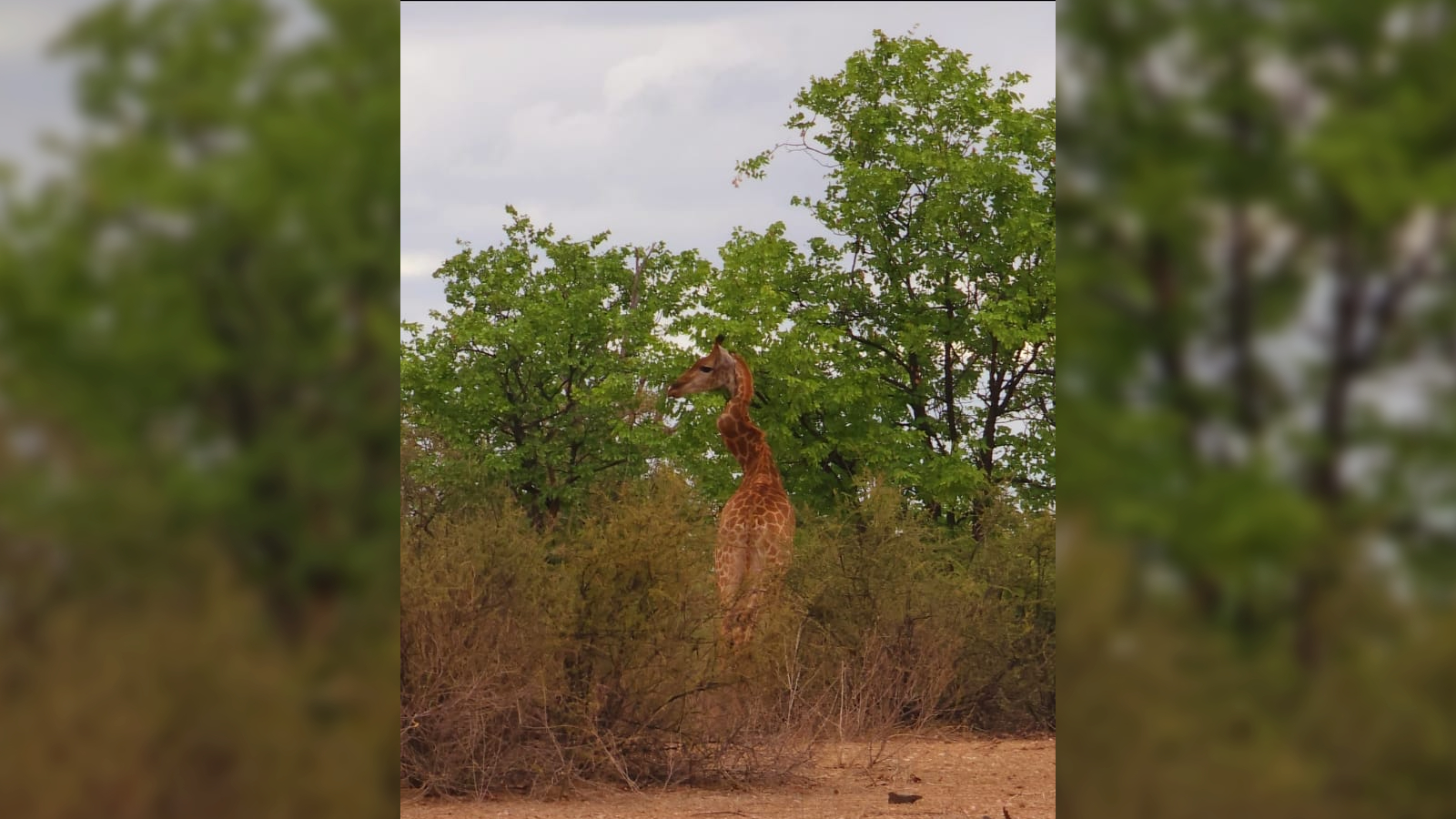Severely injured giraffe with 'very twisted' zigzag neck spotted in South Africa
New photos show a young giraffe with an extremely deformed neck in Kruger National Park. The animal may have survived a broken neck or could have a severe case of an illness that also affects humans.

A young giraffe with a zigzagging, seemingly broken neck has recently been spotted for the first time in South Africa. Almost nothing is known about this deformed animal, including how it got its extreme injury or how long it might survive.
Travel blogger Lynn Scott snapped photos of the giraffe on a wildlife tour in an unnamed, private game reserve in Kruger National Park, and shared the images July 5 on Facebook. (The exact location and date have been withheld by Scott to protect the animal from poachers.)
"It was standing still at the time" and showed "very little movement," Scott, who worked at the reserve at the time, told Live Science in an email. However, the ranger leading the tour was "not too concerned" with its lack of mobility, she added.
Social media commenters suggested that the giraffe had a broken neck. However, experts say there is not enough evidence to support this hypothesis.
"It is definitely a very twisted neck," said Sara Ferguson, a veterinarian and conservation health coordinator at the non-governmental organization Giraffe Conservation Foundation. However, "without radiographs to prove the bone has been broken, we would refer to the giraffe as having severe torticollis," Ferguson told Live Science in an email.
Related: Giraffe sex is even weirder than we thought, and it involves pee

Torticollis, also known as wryneck, is a condition that in humans "causes the head to rotate and tilt at an odd angle," according to Johns Hopkins Medicine. This can either occur from birth or be acquired later in life through a number of possible causes, including sleeping in the wrong position, herniated discs, muscle shrinkage and spinal cord infections.
Sign up for the Live Science daily newsletter now
Get the world’s most fascinating discoveries delivered straight to your inbox.
In giraffes, torticollis is particularly noticeable because of the animals' elongated necks. And, like in humans, the condition has a range of possible causes in giraffes, such as spinal cord infections and bone fractures.
Ferguson has previously seen examples of this condition in giraffes at zoos and occasionally in the wild in Zambia, Kenya and Uganda. However, she has never seen such a severe case as the latest one and is unsure what could have caused it.
In the past, wild giraffes have survived with broken necks. For example, in 2015, wildlife photographers spotted an adult male giraffe with a similar zigzag neck in Serengeti National Park in Tanzania. This individual broke its neck during a fight with a rival male five years earlier, the Daily Mail reported at the time. It is unclear if this individual is still alive.
Several Facebook commenters suggested that the giraffe in Kruger National Park may have also sustained its injury by fighting another male, also known as necking, which involves the giraffes aggressively whipping and slamming their necks together to show dominance and impress available females.
However, based on the available photos, this individual is likely a sub-adult giraffe — meaning it is likely too young to reproduce — and could be either male or female, because it is hard to determine the sex of giraffes at this age, Ferguson said. As a result, there is nothing to support the necking explanation, she added.
It is unclear how recently the young giraffe sustained its injuries or how it may impact its lifespan.
"We do not know the survival rate of such individuals," Ferguson said. They are normally only photographed once, meaning no follow-up information is available, she added.

Harry is a U.K.-based senior staff writer at Live Science. He studied marine biology at the University of Exeter before training to become a journalist. He covers a wide range of topics including space exploration, planetary science, space weather, climate change, animal behavior and paleontology. His recent work on the solar maximum won "best space submission" at the 2024 Aerospace Media Awards and was shortlisted in the "top scoop" category at the NCTJ Awards for Excellence in 2023. He also writes Live Science's weekly Earth from space series.










